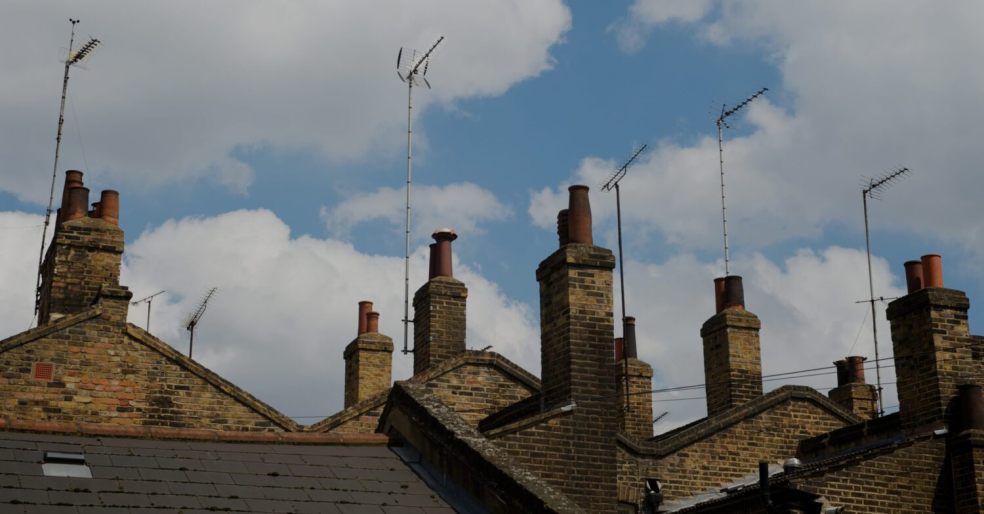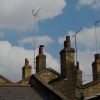
Tips for Successful TV Aerial Installation in the UK
Installing a TV aerial in the UK can be a complex task, especially if you're not familiar with the process. However, with the right knowledge and preparation, you can avoid common mistakes and ensure a successful installation.
In this article, we will provide you with tips and guidance on how to install a TV aerial in the UK, taking into account the specific requirements and regulations of the country. By following these tips, you can enjoy clear and uninterrupted TV reception in your home.
Understanding the UK TV System
Before we dive into the installation process, it's important to have a basic understanding of the TV system in the UK. The UK uses a digital terrestrial television (DTT) system, commonly known as Freeview. Freeview provides access to a wide range of digital TV channels and radio stations, without the need for a subscription. To receive Freeview channels, you need a TV aerial that is compatible with the DTT system.
Choosing the Right TV Aerial
When it comes to choosing a TV aerial, there are several factors to consider. Firstly, you need to determine the type of aerial that is suitable for your location. In the UK, there are mainly two types of TV aerials: indoor and outdoor. Indoor aerials are suitable for areas with strong signal reception, such as urban areas. Outdoor aerials, on the other hand, are recommended for areas with weak signal reception, such as rural or remote areas.
Additionally, you need to consider the frequency bands used for TV broadcasting in the UK. The main frequency bands are UHF (Ultra High Frequency) and VHF (Very High Frequency). Most TV channels in the UK are broadcasted in the UHF band, so it's important to choose an aerial that is designed for UHF reception. It’s recommended to hire a professional aerial installer to ensure the best possible outcome.
Installing the TV Aerial
Now that you have chosen the right TV aerial for your location, it's time to proceed with the installation process. Here are some tips to ensure a successful installation:
1. Determine the best location: Before installing the aerial, you need to find the best location for optimal signal reception. In the UK, TV transmitters are located across the country, and their signals can be affected by obstacles such as buildings and trees. Ideally, you should install the aerial on the highest point of your property, with a clear line of sight to the nearest transmitter.
2. Check for local regulations: Before installing the aerial, it's important to check for any local regulations or restrictions that may apply. Some areas in the UK have conservation restrictions that limit the installation of external aerials. If you live in a listed building or a conservation area, you may need to seek permission from the local authorities before proceeding with the installation.
3. Use high-quality materials: To ensure a reliable and long-lasting installation, it's important to use high-quality materials. This includes the TV aerial itself, as well as the coaxial cable and connectors. Using low-quality materials can result in signal loss and poor reception. It's also recommended to use weatherproof materials, especially if you're installing an outdoor aerial.
4. Align the aerial correctly: Once you have installed the aerial, you need to align it correctly to ensure optimal signal reception. In the UK, most TV transmitters are located in a specific direction, so it's important to align the aerial towards the nearest transmitter. You can use a compass or a signal strength meter to help you align the aerial accurately.
5. Secure the aerial properly: To ensure the stability and durability of the aerial, it's important to secure it properly. This includes using sturdy brackets and fixings to attach the aerial to the mounting pole or wall. It's also recommended to use a chimney lashing kit if you're installing the aerial on a chimney stack.
6. Test the signal strength: Once the aerial is installed, you need to test the signal strength to ensure that you're receiving all the available channels. Most TVs have a built-in signal strength meter that allows you to check the quality of the signal. If the signal strength is weak, you may need to adjust the position or alignment of the aerial.
Common Mistakes to Avoid
While installing a TV aerial in the UK, there are some common mistakes that you should avoid. These include:
Poor alignment: Failing to align the aerial correctly can result in poor signal reception. Make sure to align the aerial towards the nearest transmitter for optimal performance.
Using low-quality materials: Using low-quality materials can lead to signal loss and poor reception. Invest in high-quality aerials, cables, and connectors for a reliable installation.
Ignoring local regulations: Failure to comply with local regulations or seek permission where necessary can result in legal issues. Always check for any restrictions or requirements before installing the aerial.
Neglecting weatherproofing: The UK weather can be unpredictable, so it's important to use weatherproof materials when installing an outdoor aerial. This will protect the aerial from damage and ensure long-term performance.
Conclusion
Installing a TV aerial in the UK doesn't have to be a complicated process. By following the tips and guidelines outlined in this article, you can avoid common mistakes and ensure a successful installation.
Remember to choose the right aerial for your location, install it correctly using high-quality materials, and align it towards the nearest transmitter. By taking these steps, you can enjoy clear and uninterrupted TV reception in your home.














